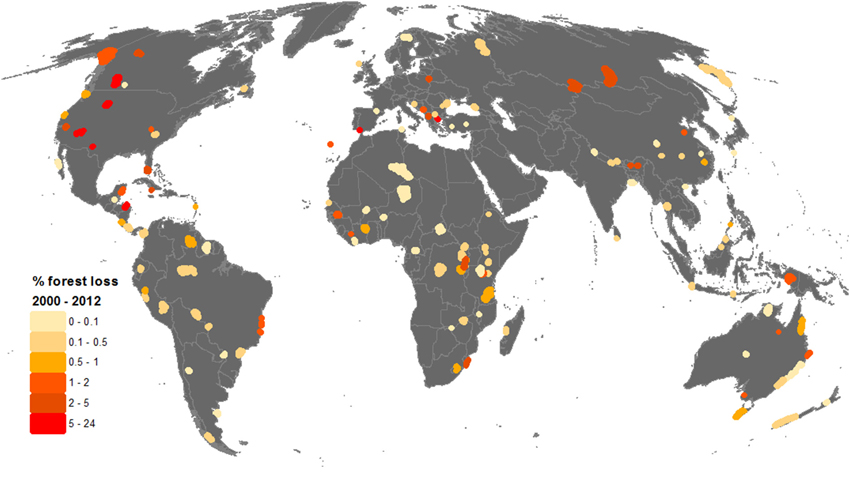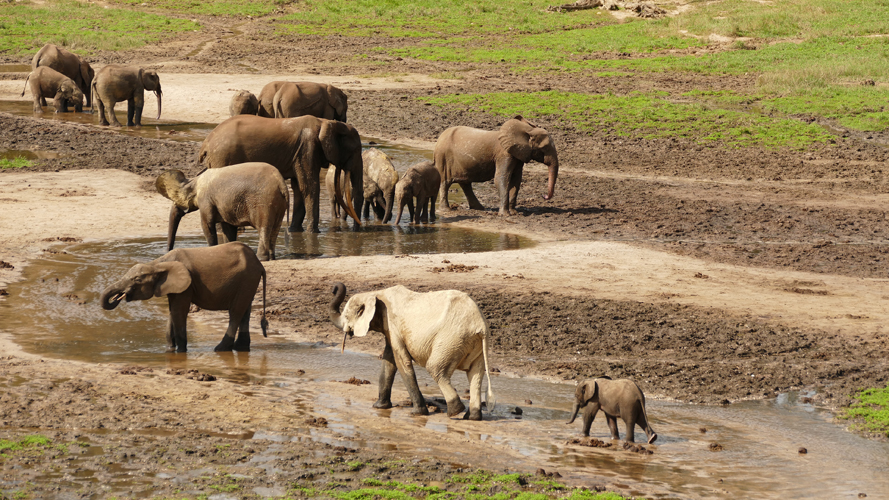Paper showing damage to natural World Heritage wins international award
A study revealing the extent of damaging activities and forest loss in Natural World Heritage Sites, led by the University of Queensland with a team of international experts, has won one of the most prestigious international publishing awards.

Map showing forest loss in World Heritage sites, courtesy of Biological Conservation.
Photo: Biological Conservation
The paper, “Recent increases in human pressure and forest loss threaten many Natural World Heritage Sites”, has been selected from thousands of recently published articles to be recognised with the Elsevier Atlas Award. Elsevier is a world-leading publisher and provider of information solutions for science, health, and technology professionals.
Published in the journal Biological Conservation, the study involved experts from the University of Queensland (UQ), Wildlife Conservation Society (WCS), University of Northern British Columbia, the International Union for Conservation of Nature (IUCN), Joint Research Centre of the European Commission, and UN Environment World Conservation Monitoring Centre (UNEP-WCMC).
“This study provides the first quantitative assessment of how humanity is negatively affecting Natural World Heritage Sites,” says lead author James Allan, PhD student at UQ School of Earth and Environmental Sciences.
“We found that more than 100 sites are being damaged by encroaching human activities such as our land uses and infrastructure. Our most concerning finding is that many sites are being seriously damaged, possibly even beyond repair.”
“Urgent action is needed to save these amazing places before it is too late,” says the studies’ senior author Dr James Watson of UQ and the Wildlife Conservation Society. “They are global assets, recognised by the international community as the jewels in the crown when it comes to nature conservation, and they are worth protecting for all of humanity.”
Thanks to this award, which was conferred today at the University of Queensland, Australia, the article is now featured prominently on Elsevier.com, which is visited by almost three million people each month. It has become freely available on Elsevier’s ScienceDirect to ensure it is accessible to all.
“Atlas articles showcase research that can (or already has) significantly impacted people’s lives around the world and we hope that bringing wider attention to this research will go some way to ensuring its successful implementation,” says Virginia Prada López, Associate Publisher with the Atlas Program for Elsevier.
To further increase accessibility of the study, the authors have also developed a digital platform to present results in each of the sites examined.
“Our aim is to make this information available to people involved in the protection and management of Natural World Heritage Sites,” says Yichuan Shi, GIS Analyst for IUCN, the advisory body on nature under the World Heritage Convention. “This analysis has great potential to inform national authorities and the international community.”



